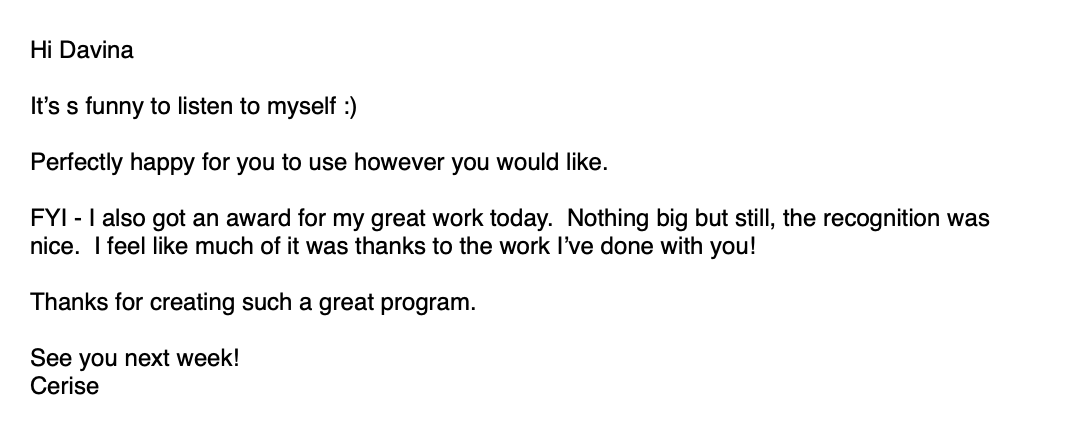×

LEARN MORE ABOUT THE WORKSHOP KIT
Enter your email below and we will keep you updated as more information is released about the kit.

TLDR. Developing strategies is hard. Structured thinking can help.
Two of this week's coaching sessions shone a very bright light on how structured thinking is about much more than ‘putting words on a page'.
It's also about clarifying those ideas in the first place.
Today I'll focus on how you can use a structured message map rather than how you build one.
Let me give you the high level story first and then explain by way of example.
Pyramid Principle is a tool for mapping your ideas, which can also be described as a thinking machine.
One of my old colleagues went so far as to call it an ‘insight engine'.
This is true if we test whether our ideas are organised according to the structured thinking ‘rules'.
If they don't, we can use the rules to work out what is wrong and to strengthen or replace the ‘misfit' ideas.
This both pushes and guides us so we think harder and communicate more impactfully.
In the classic sense, we can structure our messaging to prepare communication so it engages our audiences better.
The structured thinking rules that make the ‘machine' work provide an opportunity to use storylines to develop our strategies, not just describe them. This can be particularly effective when we collaborate with our colleagues.
This is where this week's coaching comes in.
In both sessions, we prepared a story that participants would deliver to their senior leadership in our final workshop.
The stories needed to be practical and focus on real-life problems that were substantive enough to engage their leaders.
The challenge for these two groups was that they were not in the midst of a natural paper cycle, and so didn't have anything big enough to share.
Our solution was to use our coaching session to structure a communication for a solution, even though they had yet to identify that solution.
In one case, the team developed a strategy to fine-tune their recent organisational transformation to agile ways of working.
In the other, they did two things. They
It worked a treat. I thought these were great examples of how thinking through a ‘communication' was much more than that.
In both sessions we developed new strategies to solve new problems while practicing our ‘communication skills'.
Structuring your messaging has a deeper purpose, which you can take advantage of once you really lean into the Pyramid Principle's rules.
I hope that helps.
Kind regards,
Davina
PS – To learn more, try my free 10 Minutes to Better Emails course, or check out my latest books.

I love what I do.
I help senior leaders and their teams prepare high-quality papers and presentations in a fraction of the time.
This involves 'nailing' the message that will quickly engage decision makers in the required outcome.
I leverage 25+ years' experience including
My approach helps anyone who needs to engage senior leaders and Boards.
Recent clients include 7Eleven, KPMG, Mercer, Meta, Woolworths.
Learn more at www.clarityfirstprogram.com
(*) Numbers are based on 2023 client benchmarking results.

Last week I mentioned that I have been working on some huge stories lately, and that these have been instructive in many ways.
One of the most comforting is that even huge stories look simple when they are done: it's just that the process for getting there isn't so simple.
By trusting the process and the structures and continuing to ask ‘Why?' when it didn't look right, we landed a super simple story that packed a powerful punch.
Here are two key takeaways from our experience:
On the surface, these two ideas appear simple too. Trust me when I tell you that our heads really hurt after our session even though our story looked incredibly simple too.
Trust the process and structures together with your instincts to land the story. If I reflect back on why we were able to land a simple and clear message for the $1bn savings story, it was because the stakes were too high if we did not.
The team could not afford to have the Minister ‘unpick' the messaging given they wanted a major shift away from the Minister's preferred approach for prioritising investment initiatives.
So, the challenge was to find a high-level structure that resonated and to deliver it with precision and skill, listening both to our instincts as well as our structures.
We chose a Close The Gap deductive structure, and relied heavily on the finer detail within the deductive modules supported by The So What Strategy and the Ten Point Test to bring it home.
While it took a while to agree on the high level structural pattern, it took much longer to make it ‘sing'.
Keep asking ‘Why?' to make what is obvious to you obvious to your audience. The key that turned the lock for us was the answer to the age-old ‘dumb question': Why?
Why was the team's approach better than the approach that the Minister was wedded to?
This proved challenging and took quite some time to articulate as the team was so close to the problem and to their solution, which highlights a common challenge we all face.
By the time we write our stories, we are ‘sold', so we want to move to how we will deliver the new program / project / or whatever we are discussing.
However, our audience isn't there yet which means we need to shift our own heads back in time to surface our own reasoning.
This is why it was so hard to say that ‘the greatest chance of successfully improving X system while cutting expenditure is ensuring that the division heads ‘own' the approach.
On the surface that is so simple it's almost silly. However, trust me when I tell you it wasn't easy to get there.
I suspect you are familiar with the challenge, which is why I thought it might be helpful to raise it here.
So, in terms of next steps for you: I encourage you to think about opportunities within your own communication where you need to persist to articulate the ‘right why'.
Wishing you a great week.
Kind regards,
Davina
Keywords: deductive storylines, Close the Gap

I love what I do.
I help senior leaders and their teams prepare high-quality papers and presentations in a fraction of the time.
This involves 'nailing' the message that will quickly engage decision makers in the required outcome.
I leverage 25+ years' experience including
My approach helps anyone who needs to engage senior leaders and Boards.
Recent clients include 7Eleven, KPMG, Mercer, Meta, Woolworths.
Learn more at www.clarityfirstprogram.com
(*) Numbers are based on 2023 client benchmarking results.
Brendon was offered a new job on the back of a ‘best ever’ presentation
You might also like to hear how Brendon was asked to repeat his interview presentation so it could be used as a training video.
They said it was the best presentation they had seen and, of course, offered him the job on the spot.
Brendon landed here having been a lateral hire into a Big 4 firm who needed to catch up on the sort of training that longer-tenured consultants had received.
Clarity First filled the gap for him, and many other senior consultants who want to polish their skills so they can level up their careers.
Hear it from Brendon…
Learn how Brendon achieved this.
We are always delighted to hear success stories like this from our participants.
Elle was recently promoted because she improved her communication skills after just 3 months in the Clarity First Program.
Naturally she was delighted to move from director to senior account director. She had been in her role for a bit over a year and was ready.
Her boss told her that to move to the next level, she had just two things to conquer and that Clarity First was ‘all she needed’ to get over the line.
Hear what Elle has to say about how Clarity First has helped her succeed…
Learn how Elle achieved this.

I love what I do.
I help senior leaders and their teams prepare high-quality papers and presentations in a fraction of the time.
This involves 'nailing' the message that will quickly engage decision makers in the required outcome.
I leverage 25+ years' experience including
My approach helps anyone who needs to engage senior leaders and Boards.
Recent clients include 7Eleven, KPMG, Mercer, Meta, Woolworths.
Learn more at www.clarityfirstprogram.com
(*) Numbers are based on 2023 client benchmarking results.

You know your stuff.
You have been working on it for a long time.
You have been promoted.
But now you need to deal with more senior stakeholders and nobody seems to be able to articulate what they need from you.
And, in looking at your predecessor's communication you can tell it's not how you want to communicate.
But … how do you communicate to your new leaders?
So, what if you could go from here to:
But, enough from me.
Cerise should tell her own story.
First, the email then the short video.

Learn how Cerise achieved this.

This post was prepared by Davina Stanley, founder of The Clarity First Program and author of The So What Strategy.
Davina has been helping experts communicate complex ideas since joining McKinsey as a communication specialist 20+ years ago.
She helps experts clarify their thinking so they can prepare powerful and strategic communication in any format. It might mean preparing for a difficult meeting, getting ready for a project steering committee, putting forward a business case or writing a board paper.
She bases her approach on The Minto Pyramid PrincipleⓇ combined with other powerful techniques to help experts of all kinds globally strengthen their communication skills.
During these times of uncertainty clarity in your thinking and communication is vital.
This case study of a communication sent to customers during the COVID-19 pandemic offered an excellent way to illustrate the need for top down and bottom up thinking, a topic we have be discussing regularly of late here at Clarity First.
This rich case study encourages you to:
Click the play button below to learn more and here to download the handout and here for more program information and here for information for your manager.
This was the best course I have done. I was always confident in my reasoning but not as confident with presenting it, particularly to audiences that were not on my wavelength.
Davina has shown me how to organise my high level messages which gets me a better response from my audiences.
In fact, when I used the approach to present to the sales team last week half of them came up to me individually afterwards to compliment me on my presentation. That has never happened before!
Clarity First was incredibly useful for me as it has provided a framework through which I am able to structure my initial thoughts quickly and easily.
I have always been OK at delivering communications, but the tools Davina has taught me will not only make the communications clearer and more concise but the time taken to get to the end point has reduced greatly.
I recommend the course to anyone who wants to make existing skills even better or for those that want to create the foundations for great communication.
Keywords: ShopCo Case Study, workshop, free

In my recent webinar I asked for questions from the audience and Claudia asked about a great topic: trust. As she mentioned, if your audience doesn't trust you, you will be lucky if they will open your email or meet with you, let alone respond in a helpful way to what you have to say. So, how to build trust?
Focus on identifying and dealing with the root cause before you move forward – carefully. Here are a few ideas for doing that:
Identify the root cause
If someone doesn't trust you, there is no point trying to make progress. You need to understand why they don't and deal with that first. Here are some questions to ask yourself:
Deal with the root cause as a separate issue
Once you know what has caused the lack of trust, if at all possible, deal with that as a separate issue so you don't contaminate the main ‘thing' you want to progress.
If you only have one opportunity to communicate with the person or people in question, then deal with it first. Here are some ideas to help with that:
Move forward carefully
Once you are comfortable that you have made sufficient progress in resolving the trust issue, consider moving forward with the thing you need to communicate about.
When doing so, be mindful of addressing any concerns they may have, listen and watch VERY carefully while also over communicating and over delivering.
Their trust will be much harder, if not impossible, to earn back if you lose it again.
REFERENCE: Building or rebuilding Trust, by Michael Hyatt. https://michaelhyatt.com/how-to-build-trust/
Keywords: building trust

I love what I do.
I help senior leaders and their teams prepare high-quality papers and presentations in a fraction of the time.
This involves 'nailing' the message that will quickly engage decision makers in the required outcome.
I leverage 25+ years' experience including
My approach helps anyone who needs to engage senior leaders and Boards.
Recent clients include 7Eleven, KPMG, Mercer, Meta, Woolworths.
Learn more at www.clarityfirstprogram.com
(*) Numbers are based on 2023 client benchmarking results.

It is easy to go to extremes when giving email feedback: either so harsh that your recipient is upset and is either so offended or angry they ignore your suggestions or so soft that they miss the point altogether.
This can be because we are either too cautious about upsetting someone and too aware of the limitations of the medium or because we are in a rush and don't realise the impact we are having.
A short article from Fast Company by Sara Marco of The Muse provides a simple formula for getting the balance right: not too hard but not too soft either: just right.
When providing feedback to your team members as they start to use storylines, Sara Marco's approach will work brilliantly.
It provides an opportunity to highlight what your team member has gotten right, and also what they can improve.
Without this level of consistent feedback, your teams are unlikely to stick with the approach and give you the results you need: less rework for you, more great ideas being approved by those higher up.
And, what I love even more about this article, it is written using a pretty solid grouping structure.
Click here to have a read and see what you think.
Separately, if you would like more ideas on writing better emails, you may enjoy my free course, 10 Minutes to Better Emails. Learn more here.
Keywords: emails, leadership communication, leadership skills

I love what I do.
I help senior leaders and their teams prepare high-quality papers and presentations in a fraction of the time.
This involves 'nailing' the message that will quickly engage decision makers in the required outcome.
I leverage 25+ years' experience including
My approach helps anyone who needs to engage senior leaders and Boards.
Recent clients include 7Eleven, KPMG, Mercer, Meta, Woolworths.
Learn more at www.clarityfirstprogram.com
(*) Numbers are based on 2023 client benchmarking results.